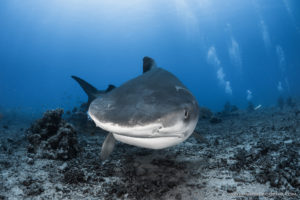
Text by Mary Peachin, photos courtesy of TOPDIVE
Vol. 20, No.10
Sharks were everywhere. Not like hundreds of schooling hammerheads in the Cocos Island or Galapagos, sharks that scatter at the sound of a regulator bubble. These were black, grey, and white tips, swimming in every direction. Also enjoyed the fast current were hammerheads, nurse, silvertip, and graceful giant manta. To add to this overload, schools of reef fish hung in the current. To mention a few there were varieties of jack, soldier fish, surgeon fish, big node unicorns, orange line and pompano triggers, blue fin trevally, and more.
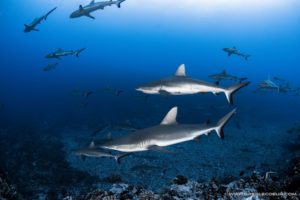
This visual overkill offered about 100 foot visibility. The fish and shark were so thick that I could have missed seeing some species. The rich diversity in this ecosystem of undersea hard coral mounts, myriad of reef fish, and countless sharks make Fakarava’s Garuae Pass well qualified as an UNESCO Biosphere Reserve.
Rangiroa is an equally exciting drift dive, one that is better known in the dive world, but considered less challenging than Fakarava. Tiputa Pass is known for sightings of dolphins, marlin, grey, hammerhead, and other sharks, plus manta rays. I had been told that I wouldn’t need a reef hook to hang on in the current, but I would have loved to have had mine holding me in place.
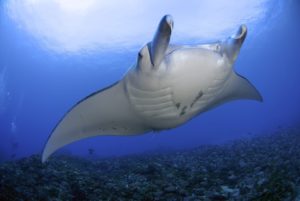
Having dived solo for decades, when my husband suggested that we take our first cruise on French Polynesia’s Paul Gauguin, I jumped at the chance to “have my cake and eat it, too.” Yes, I would not have the option of 4-5 dives a day, but I would have a romantic vacation on a luxury ship, and one that offered diving. Sounded good to me until I read the fine print saying “Diving available on a space available basis.”
No, I wasn’t willing to journey that far a distance after learning that my less than opportune options to dive were not committed. HELLO, GOOGLE! I found a Tahiti land based operator, TOPDIVE, who had operations in five Paul Gauguin ports of call: Papeete, Bora Bora, Moorea (Society Islands) and the Tuamoto atolls of Rangiroa and Farkarava. I could begin diving in gateway Papeete prior to the ship’s departure.
At each atoll TOPDIVE would pick me up at the dock either by truck to drive me to their dive shop or in their dive boat to head directly to the site. When we finished our diving, they return me to catch the tender back to the Paul Gauguin.
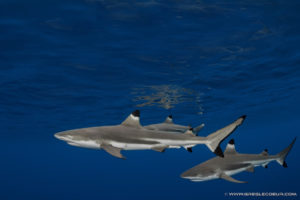
It was a schlep to haul my gear, already dressed in a skin and wearing booties on the first 8:30 am tender, but it would prove well worth it. Summing up the accolades for TOPDIVE is easy. They had boats, of varying sizes, specifically built for diving, excellent English-speaking dive masters, good to excellent dive sites, and offered complimentary good equipment: an Aqua Lung regulator and BCD, a three-inch shorty for the 82 degree water, Nitrox, plus a Suunto dive computer (I accidentally left mine at home.) After each dive, they served tea and water, fresh fruit or donuts. They were prompt and courteous.
I found it incredible when TOPDIVE advised me that I left a magnifying glass in my vest in Papeete, and they delivered it to me in Moorea. Whenever I saw one of the dive shops, it was clean, attractive with apparel that even non-divers on the Paul Gauguin purchased.
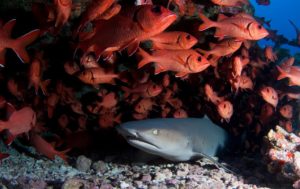
The expertise of TOPDIVE‘s crew was evident and necessary when it came to the speed and direction of currents in both Fakarava and Rangiroa. Tides and currents are charted for a period of three plus weeks. The width of these two passes, both of which have reached cult status in the dive community, create strong currents flowing in every direction. Off the beaten Polynesian path, less traffic attracts serious, experienced divers providing those who make the effort for this awesome experience.
Diving these currents is more than just a great float. Exact timing of the incoming tide is crucial and divers have to deal with upwellings, and side currents in order to not get swept away. In Rangiroa, diving with a Japanese couple, the divemaster had to hold on to the woman to keep her at depth. I am not sure if it the issue was an issue of weight or buoyancy.
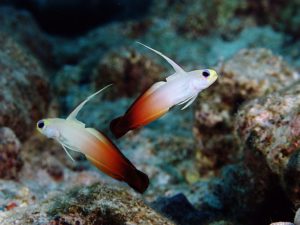
It was a new dive experience for me. I was using equipment displaying bars and meters rather than psi and depth, and diving daily with different non-English speaking nationalities. Over a ten day period, I briefly dived with one American. The other divers were German, French, Japanese and each was friendly in spite of the limited or almost non-existent ability to communicate. Fortunately, I don’t use more than half a tank of air so I never had to worry about reading gauges or having to signal a half tank turnaround.
Everything appeared seamless in spite of my 8:30 chronic tardiness. TOPDIVE was aware of the Paul Gauguin schedule, they could watch the tender making its typical ten minute shuttle.
On one occasion TOPDIVE canceled my diving. Luckily, I had filled out Paul Gauguin’s paper work, so I signed up to dive two days on our first day in Moorea with the ship. I didn’t want to be “dive-less” in Moorea.
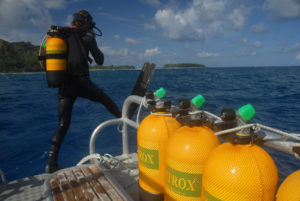
There are choices. If I had an experienced buddy, I would use TOPDIVE’s E-Tahiti Travel, and fly Air Tahiti between the two atolls. In my case, other than being canceled by TOPDIVE one day, my decision was the best.
www.topdive.com
www.pgcruises.com
www.etahititravel.com
